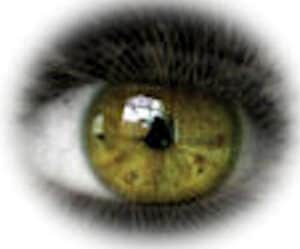You think that it should be simple: aren’t all eyeglass lenses clear plastic: Most are, but there are several types of plastic, each with features that differentiate them by how they function. There are also glass lenses, which are only occasionally a first choice.
Once the eye doctor has written up a prescription for eyeglasses and you are sitting in front of the optician, he or she will begin asking you questions about lens-type preferences. The optician will often give suggestions as to the best lens material for you based on the prescription. They will usually educate the consumer as to the features that will be beneficial. Here are the basic types of lens materials:
CR-39
This is the 39th plastic polymer formula that was found to be the best for eyeglass lenses back in 1940, and has been used ever since. It is by far the most commonly used plastic for eyeglass lenses.
The advantages of CR-39 lenses:
- Comparatively less expensive,
- Offers some UV light protection,
- The best option for tinting (eg: sunglasses.)
The disadvantages of CR-39 lenses:
- Tends to be thicker in the higher lens prescriptions than other plastic lenses,
- Requires a scratch-resistant coating to protect the surface, and
- Requires a UV coating for 100% UV protection.
Polycarbonate Lenses
These are known as the ‘impact resistant’ lenses. Often used for safety glasses and windshields. This is the lens that is prescribed for children and monocular (one-eyed) patients as protective eye wear.
The advantages of polycarbonate lenses are:
- Lighter and thinner than CR-39,
- Impact resistant, and
- 100% UV protective without additional coatings.
The disadvantages of polycarbonate lenses:
- The surface is ‘softer’ than CR-39, therefore must have a scratch resistant coating applied,
- May have more internal lens reflections and less clarity in the peripheral area of the lens than CR-39.
Hi-index Plastic
This category includes several different plastics of differing ‘indices’. The hi-index refers to the index of refraction, which is the lens’ capability to bend light. The higher the index, the lighter and thinner the lenses will be. These are the lenses most frequently used for those with high prescriptions.
The advantages of hi-index lenses are:
- Lighter and thinner than CR-39 and polycarbonate,
- 100% UV protective, and
- Better peripheral optics than polycarbonate.
The disadvantages of hi-index lenses:
- May have more internal reflections than polycarbonate and CR-39, and
- More expensive.
Glass Lenses
These lenses have fallen out of favor because they tend to be heavy and thicker than the plastic lenses.
The advantages of glass lenses are:
- One of the best for optical clarity,
- More scratch resistant than plastic, and
- Can be purchased as photochromic lenses. (Plastic lenses can be photosensitive, like Transitions®.)
The disadvantages of glass lenses are:
- Not UV protective, unless UV coated,
- Thicker and heavier than a plastic lens in the same prescription, and
- Not impact resistant. Although tempered they can still shatter or chip.
So it depends on what you are looking for:
Protection, impact resistance: polycarbonate, which is a good choice for sunglasses and sports glasses.
Protection from UV light: polycarbonate, high index lenses, and CR- 39 plastic with a UV coating to increase its UV absorption.
Lightweight comfort: Hi-index lenses were created for this purpose, and are the best choice for those with high powered eyeglass prescriptions. This is a consideration for those with low vision, who have a strong, thick eyeglass prescriptions. An anti-reflective coating will be recommended to minimize the internal lens reflections.
